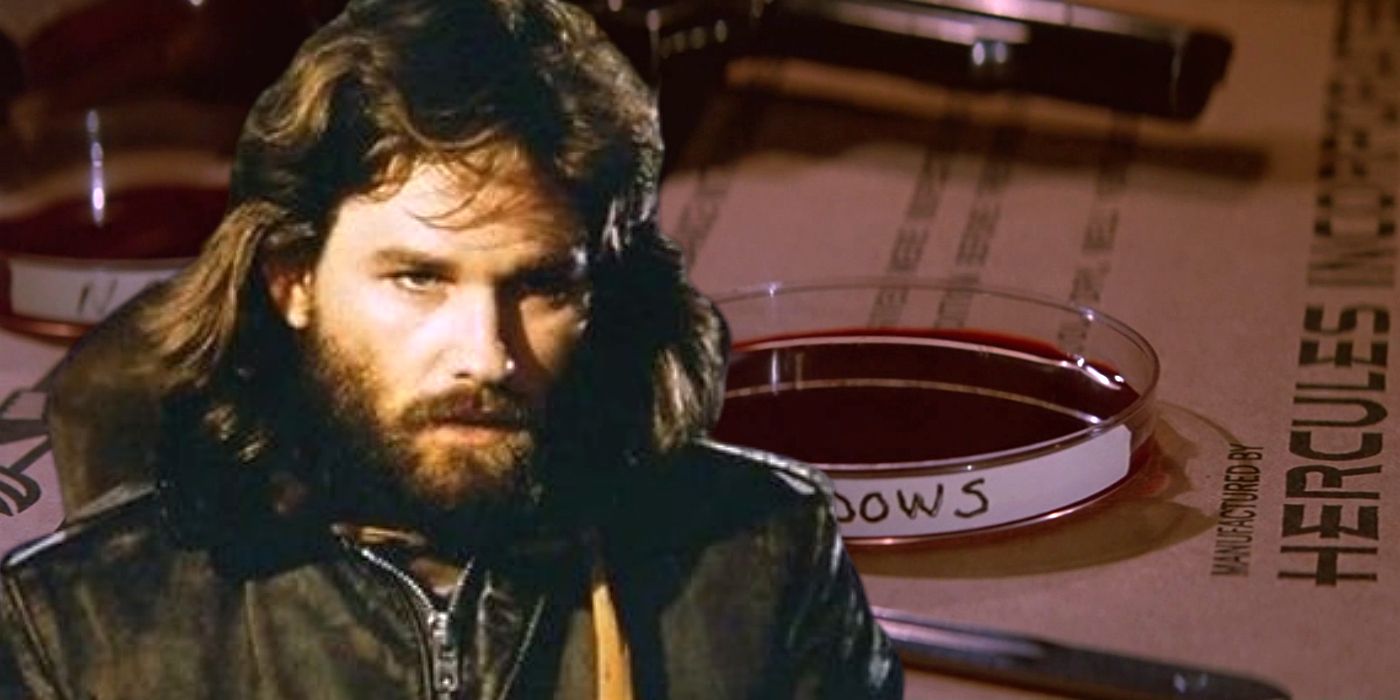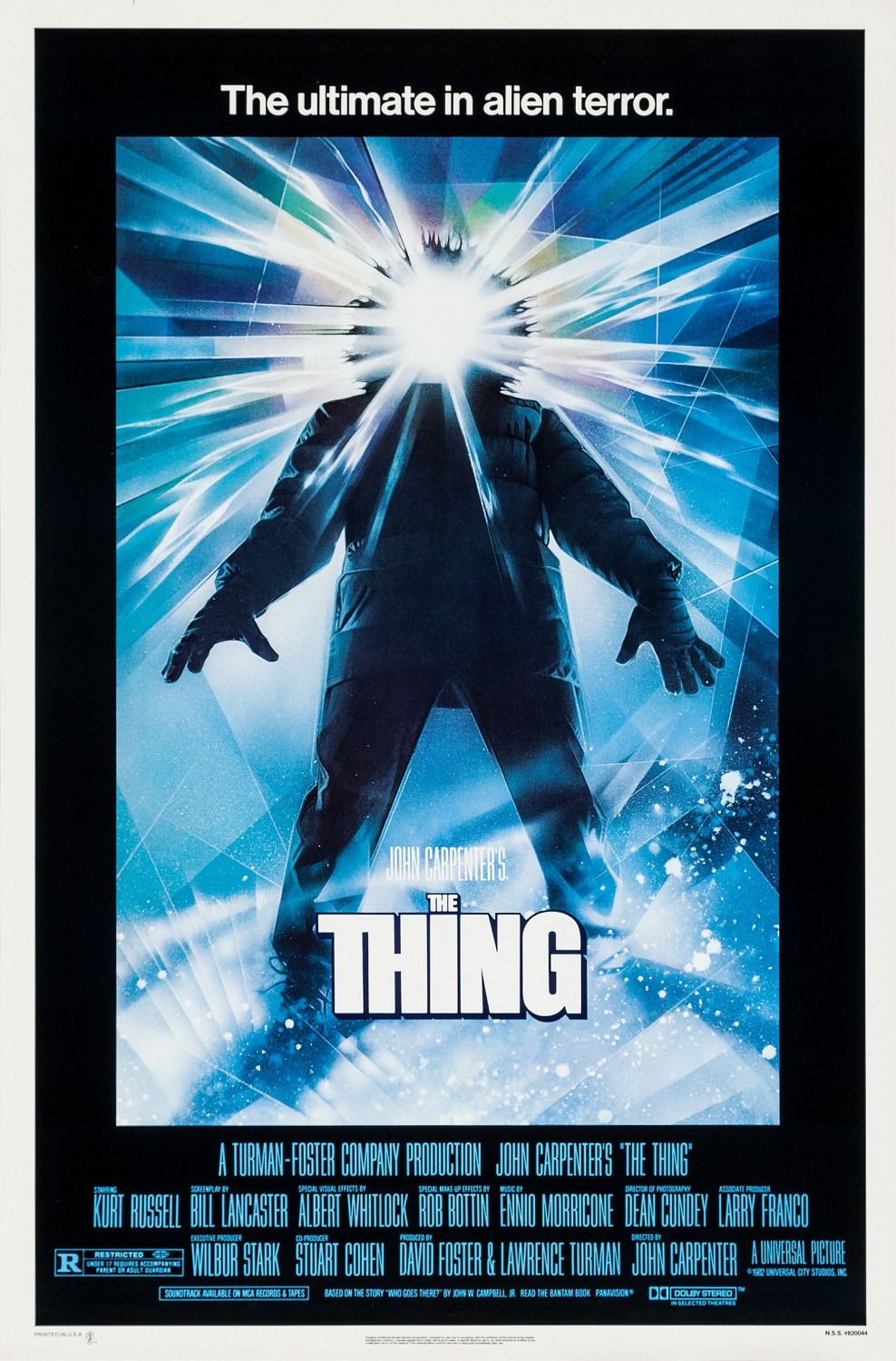John Carpenter’s The Thing has an ambiguous ending that sparked a lot of debate and made way for various theories, but all this was already solved 22 years ago, though many might have missed it. John Carpenter is one of the most influential horror filmmakers in history, with his 1978 film, Halloween, being key in the development of the slasher genre in the 1980s. Carpenter has since continued his work in the horror genre, and in 1982, he brought the sci-fi horror movie The Thing, based on the 1938 novella Who Goes There? by John W. Campbell Jr.
The Thing is set in Antarctica where a group of researchers come across a mysterious, extraterrestrial life form that assimilates and imitates other organisms. This “Thing” begins replacing the team’s members one by one, with the survivors overcome by paranoia as they no longer know who they can trust and who could be the Thing. Despite getting negative reviews during its initial release, The Thing is now regarded as one of the greatest sci-fi and horror movies ever and its ending has been the subject of endless debate – but the answer to it was already given 22 years ago.
The Thing’s Video Game Sequel Revealed Childs & MacReady’s Fate After The Movie
The Thing’s Video Game Is Considered Canon
The 2002 video game
The Thing
serves as a sequel to the movie. In it, the player is Captain Blake, a member of the United States Army Special Forces team sent to Antarctica to determine what happened to the team.
The Thing’s group of researchers includes R.J. MacReady (Kurt Russell), a helicopter pilot who, when the Thing starts messing with them at their station, takes control after the team loses faith in the leadership of their commander, Garry (Donald Moffat). When the Thing starts assimilating the members of the group, Copper (Richard Dysart) suggests testing their blood and comparing it to the uncontaminated samples they had in storage to see who was still human and who was the Thing. Unfortunately, someone (or something) gets to the blood before them and destroys the samples.

Related
The Thing: Who Got To The Blood?
John Carpenter’s The Thing brought sci-fi and body horror, as well as a big mystery fans have been trying to solve for decades: who got to the blood?
After finding another way to test their blood, the paranoia among the group only grows, and by the end of The Thing, only two crew members remain: MacReady and Childs (Keith David), the chief mechanic who disappeared minutes before but returns after MacReady triggers explosives, destroying the station. At the end of The Thing, MacReady sits by the burning remnants of the station and is joined by Childs, who claims to have gotten lost in the storm while pursuing one of their colleagues-Thing.
With seemingly no way out and no other solution to save themselves from the Thing, MacReady and Childs accept their fates in the snow and share a bottle of whiskey. This left the question of whether MacReady or Childs (or both) was the Thing or not, making way for the famous “eye gleam” theory. However, this was answered in the 2002 video game The Thing, which serves as a sequel to the movie. In it, the player is Captain Blake, a member of the United States Army Special Forces team sent to Antarctica to determine what happened to the team.
Carpenter endorsed the video game and considers it canon, so it gives a definitive answer to what happened to Childs and MacReady.
Once there, they find a tape recorder with a message from MacReady, resigned to their fate, and also find the body of Childs, who died from hypothermia. MacReady doesn’t appear in The Thing video game until the very end, when Blake comes across a helicopter pilot who helps him defeat the Thing and with whom he flies away from the base, and the pilot is none other than MacReady. Carpenter endorsed the video game and considers it canon, so it gives a definitive answer to what happened to Childs and MacReady.
John Carpenter Has Already Debunked A Popular Theory About The Thing’s Ending
If The Thing’s 2002 video game is a canon sequel to Carpenter’s movie, then the debate of who was the Thing at the end of it should be over, but it isn’t just yet. As mentioned above, there’s a popular “eye gleam” theory triggered by The Thing’s cinematographer Dean Cundey, who revealed that in the blood test sequence, he and Carpenter came up with the idea of adding light to the eyes of the characters who were still human.
This made way for the belief that the same technique was used in the ending, thus hinting at who was still human and who wasn’t. Carpenter debunked the “eye gleam” theory in 2023, saying that he knows who’s the Thing and who’s not at the end of the movie, which clashes with what the video game revealed. According to the video game, neither Childs nor MacReady were the Thing, so either Carpenter was messing with the audience or MacReady wasn’t human anymore at the end of the video game.
The Thing’s Movie Ending Is Better Left Ambiguous
The Thing Is Better With The Mysteries Of Its Ending
The ambiguous ending of The Thing perfectly fits the movie’s main themes and intentions. The more paranoid and distrustful MacReady and company grew, the more intrigued and confused the audience was, as they also had no idea who could have been the Thing and who could still have been alive.
With that in mind, it makes sense that The Thing would leave the audience wondering if MacReady and Childs were still human or not, continuing with the theme of paranoia until the very end, while also leaving a sense of unease, as if they were human, they were going to freeze to death.
The mystery left by the ending of
The Thing
has also been key to the legacy of John Carpenter’s movie…
Ultimately, The Thing doesn’t need to reveal if MacReady or Childs was the Thing at the end or not, as that wouldn’t change anything else in the movie. The mystery left by the ending of The Thing has also been key to the legacy of John Carpenter’s movie, but for those looking for a definitive answer, the video game gives a pretty satisfying and fitting one.
The Thing’s Ambiguous Ending Is Its Best Asset
The Questions About The Ending Have Kept The Thing On Audience’s Minds
There are a lot of reasons why The Thing is considered one of the greatest horror movies of all time, from the isolated setting to the amazing creature effects. However, the ambiguity of the ending that has kept the debate alive for so long is perhaps the biggest contributor to the movie’s lasting legacy. While ambiguous movie endings can be frustrating to audiences, one that keeps being talked about is a sign of the uncertainty being executed perfectly.
The Thing could have been a sci-fi movie that came out to bad reviews and was forgotten by most audiences. However, it is a film that people want to return to often, and part of the reason is the ongoing conversation around the ending. It has helped to create a level of interest that people return to many times and that keeps the memory of the movie alive. Like the spinning top in Inception, it is a question that doesn’t need to be answered, but the fact that there might be an answer continues to excite people.
The ending of The Thing is the perfect final note John Carpenter leaves the audience with. With the intense and gruesome story coming at the audience for the entire runtime without letting up at all, some filmmakers might have felt it necessary to give them a break in the final moments. Not only does Carpenter refuse to give the survivors a happy ending but he leaves the idea that the villain won hanging in the air. It is done with confidence, but also an understanding of what the story needed.

A team of researchers set out to study an alien spacecraft found in Antarctica, where they also discover an alien body on the site. The alien buried in ice is actually alive and has the ability to imitate human form. The group must find a way to distinguish who the real person is from The Thing and stay alive. John Carpenter’s 1982 film is a remake of 1951’s The Thing from Another World and stars Kurt Russel as the hero RJ MacReady.
- Release Date
- June 25, 1982
- Runtime
- 109 minutes